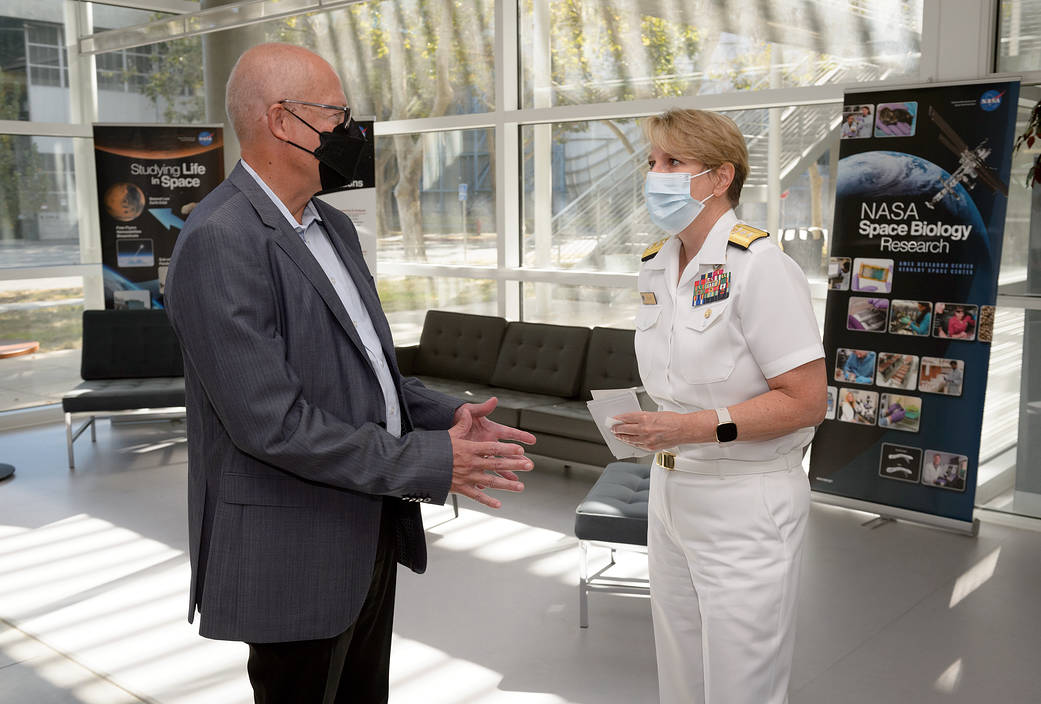U.S. Navy Rear Admiral Anne M. Swap, director of the National Capital Region Market, Defense Health Agency, right, and Michael Hesse, director of science at NASA’s Ames Research Center in California’s Silicon Valley, tour the Biosciences Collaborative Facility at Ames on Aug. 17, 2022.
Opened in 2020, the facility brings space biology, astrobiology, and bioengineering researchers together to advance NASA’s strategic goals in both human exploration and science. The work conducted in this facility will help spur advances that minimize risks in human deep space exploration, informing the design of future NASA missions and our search for microbial life in our solar system.
Ames has a longstanding history of collaboration with the Navy, including current technology partnerships involving human health, life support and habitation, and flight vehicle systems.
During the visit, Swap learned about NASA’s GeneLab – an open repository for space biology data anyone can use to make discoveries about ways life from Earth is affected by the conditions of space. Biological space research helps find solutions for astronaut health and promotes the well-being of humans here on Earth. Additionally, Swap learned about the Lunar Explorer Instrument for Space Biology Applications science suite, an instrument that will conduct biological research on the surface of the Moon. This investigation will study how the combined effects of partial gravity and deep space radiation influence biological processes.
Swap also toured Ames’ Arc Jet Complex. This facility provides ground-based hyperthermal environments in support of the nation’s research and development activities in thermal protection materials, vehicle structures, aerothermodynamics, and hypersonic entry. The facility tested the heat shield material that will protect the Orion crew module during its reentry after the Artemis I launch, currently targeted for no earlier than Aug. 29 at 5:33 a.m. PDT.
Credits: NASA/Dominic Hart




























